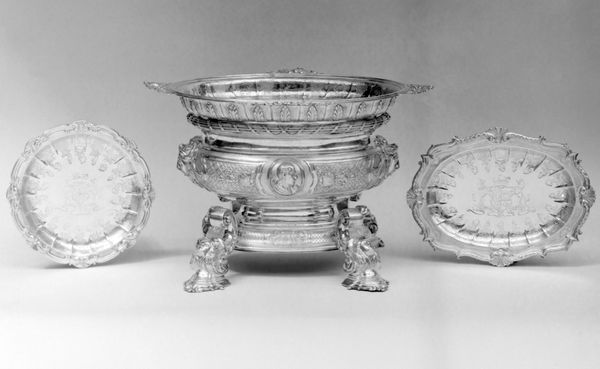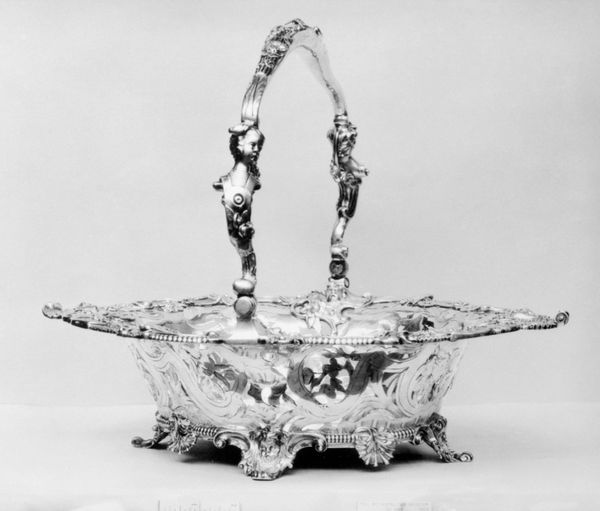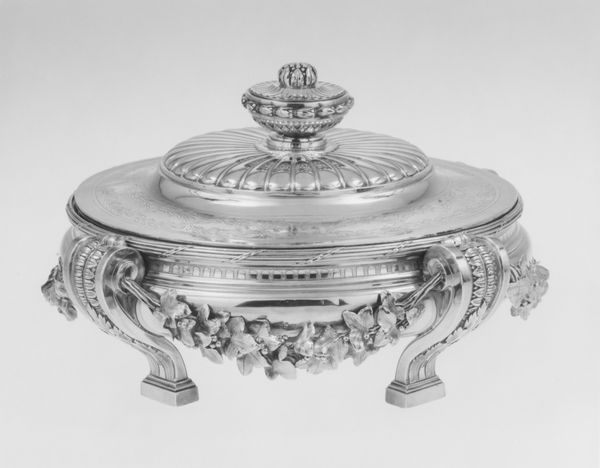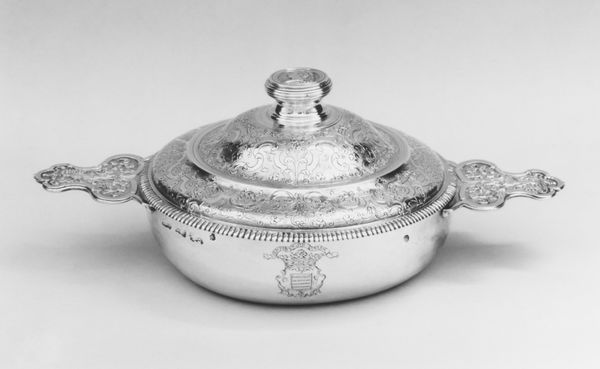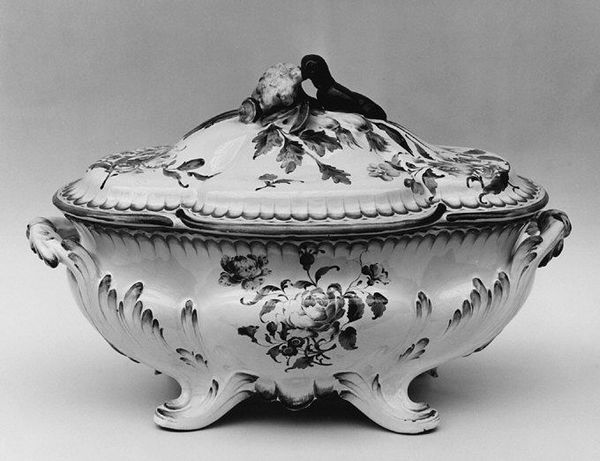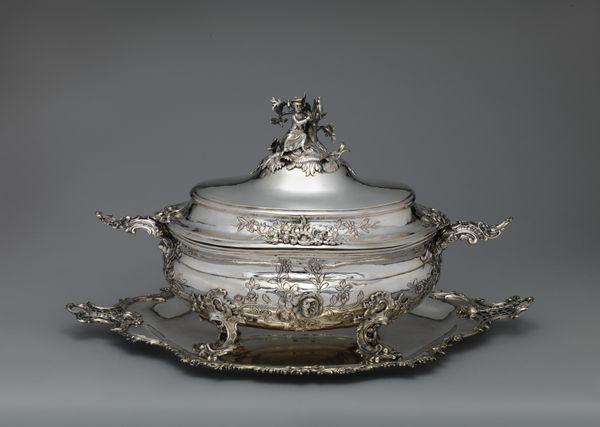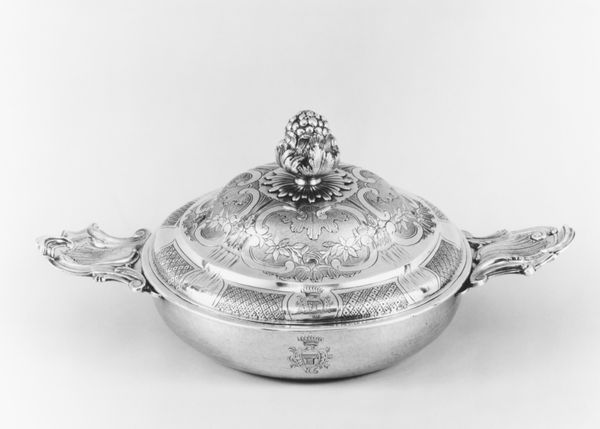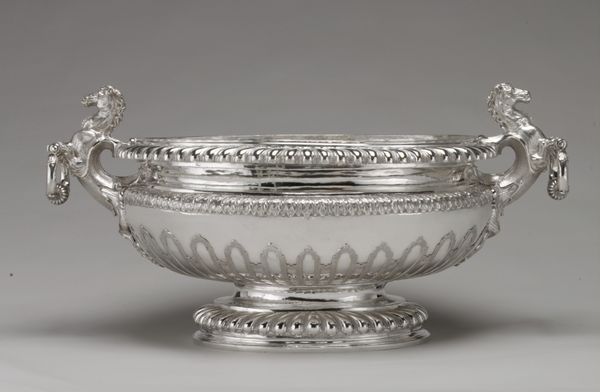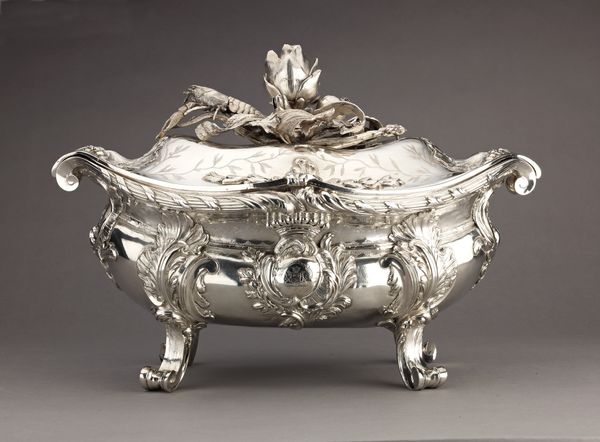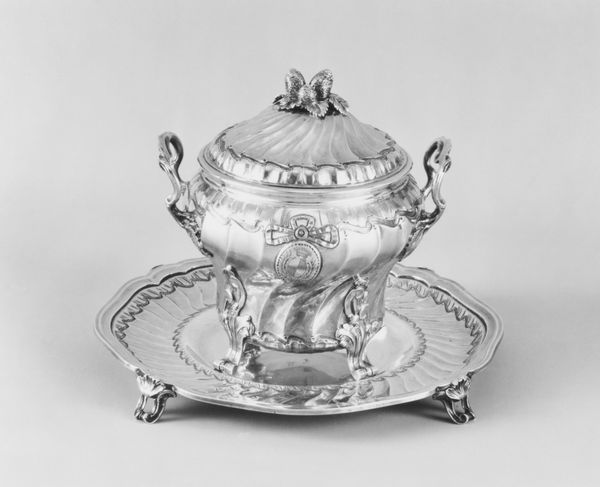
silver, metal, sculpture
#
silver
#
baroque
#
metal
#
sculpture
#
sculpture
#
decorative-art
Dimensions: Overall: 8 × 21 3/4 × 20 in. (20.3 × 55.2 × 50.8 cm); Overall (cover (b)): 14 1/4 × 12 1/2 in. (36.2 × 31.8 cm); Diameter (dishes (c–f), each): 7 1/16 in. (17.9 cm); Greates diagonal: 27 in. (68.6 cm)
Copyright: Public Domain
Curator: This is an Epergne crafted by Paul de Lamerie between 1738 and 1739. You can find it in the Metropolitan Museum of Art. Editor: My first thought is "extravagant!" Look at the details; the composition is a dazzling statement of Baroque indulgence. Curator: Indeed! Lamerie was celebrated for his Rococo designs. Notice how the piece isn't just functional—holding fruit, sweetmeats, spices—but it’s also sculptural. The multiple tiers and elaborate ornamentation speak volumes about wealth and status in the 18th century. Editor: The repetitive structure—the five small dishes symmetrically arranged—creates visual balance. Each dish offers a unique plane while all point back to the primary basin. I would be curious to explore the object semiotically in context... It speaks of control as much as lavish abundance. What's the feel when you get near? Curator: The texture of the silver, cold yet gleaming under the gallery lights, somehow adds to the intensity, almost hyper-real—considering how soft, almost melting, Rococo sculpture can appear in marble. The quality and density are quite impressive close-up, each flower and tiny god looking almost too present. One forgets, though, that it’s an item for holding sugarplums. It feels somehow wrong to put mundane food inside such complexity, as though to do so would be sacrilegious. Editor: I agree with your observation. In isolation, one's view of this object could be merely aesthetic, ignoring Lamerie's design choice that ultimately emphasizes functionality in service of spectacle. It certainly provokes thinking about what our rituals reveal about us and how such objects play active roles within them. Curator: Considering the function adds layers, doesn't it? Next time I see a tiered cake stand, I will inevitably ponder these very issues. Thanks for sharing your perspectives. Editor: Absolutely! Considering all of these elements adds context and depth. Thanks.
Comments
No comments
Be the first to comment and join the conversation on the ultimate creative platform.

